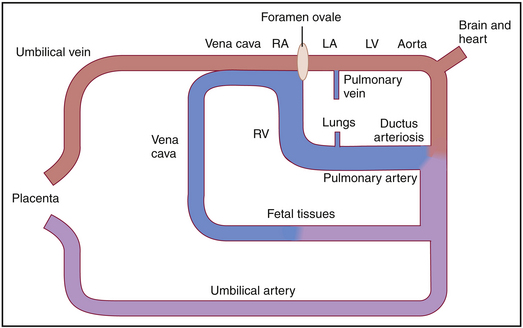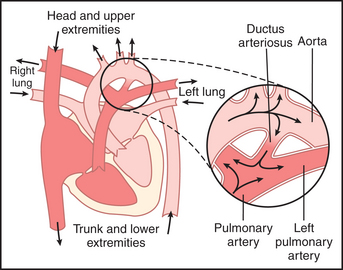11 CASE 11
PATHOPHYSIOLOGY OF KEY SYMPTOMS
In utero, the ductus arteriosus allows the flow of blood from the pulmonary artery into the aorta, so that 90% of the right ventricular output bypasses the lungs. Blood flowing through the ductus arteriosus joins with the blood pumped by the left ventricle into the aorta to provide blood flow to most of the body. Vessels that originate from the aorta before the juncture with the ductus arteriosus carry relatively well oxygenated blood to the brain and heart (Fig. 11-1).
When the ductus arteriosus remains patent, or “open,” blood flow from the aorta into the pulmonary artery persists after birth. There may not be any apparent symptoms, because this congenital defect does not impair oxygenation of blood pumped by the left ventricle. Instead, blood flowing through the ductus arteriosus actually passes through the lungs for a second time before being pumped into the systemic circulation (Fig. 11-2).
< div class='tao-gold-member'>
Stay updated, free articles. Join our Telegram channel

Full access? Get Clinical Tree




